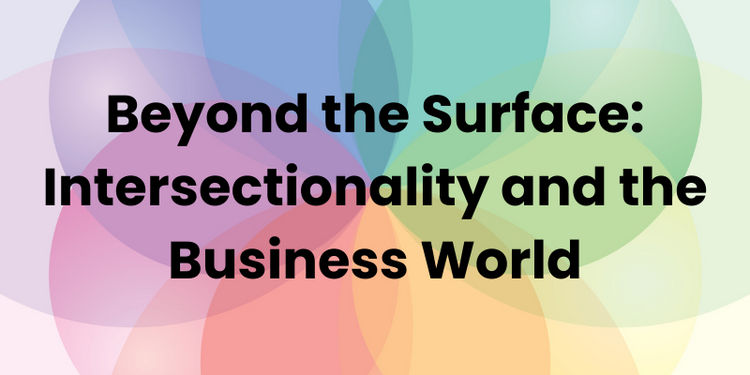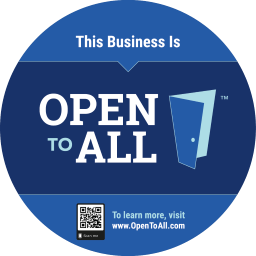
Intersectionality is a powerful lens through which to understand the experiences of diverse micro and small business owners and nonprofit founders. Coined by scholar Kimberlé Crenshaw in the late 1980s, it describes how various aspects of a person's identity, such as race, gender, sexuality, class, and ability, intertwine to create unique experiences of discrimination and privilege. Instead of seeing these identities as separate, intersectionality recognizes that they overlap and influence each other, often amplifying the challenges or opportunities individuals face. For diverse micro and small business owners and nonprofit leaders, intersectionality isn't just a theoretical concept—it's a lived reality that directly impacts their entrepreneurial journeys.
How Intersectionality Affects Diverse Business Owners
For micro and small business owners whose identities span multiple marginalized groups, intersectionality shapes nearly every aspect of their entrepreneurial journey. Consider a Black woman running a small business: she faces not only racial discrimination but also gender bias, both of which impact her ability to access funding, mentorship, and professional networks. Her race may result in being overlooked or stereotyped, while her gender may subject her to assumptions that she lacks business acumen or leadership qualities.
In terms of access to capital, intersectionality can amplify the barriers faced by marginalized entrepreneurs. Studies have shown that women, particularly women of color, receive only a small fraction of venture capital funding. According to a report by the Kauffman Foundation, Black women are the fastest-growing demographic of entrepreneurs in the U.S., yet they receive less than 1% of venture capital. This disparity isn't just about gender or race in isolation—it's the compounded effect of both identities that creates unique barriers to entry.
The experience of LGBTQ+ business owners provides another clear example of how intersectionality influences access to opportunity. A gay Latino entrepreneur, for instance, may experience homophobia in certain business environments while also confronting racial biases that reduce his visibility or credibility in mainstream business circles. These compounded identities shape how he is perceived by investors, partners, and customers, often requiring him to navigate a more complex web of challenges to build a successful business.
Intersectionality and Nonprofit Leadership
Nonprofit leaders from diverse backgrounds face similar challenges but in a slightly different context. In the nonprofit sector, where relationships with donors and foundations are critical for success, intersectionality can affect how leaders are perceived and whether they are able to secure funding. A Latina nonprofit leader, for example, may struggle to build the same kind of relationships with high-profile donors or grant-making organizations that are readily available to her white male counterparts.
Moreover, the intersection of race, gender, and class can also create barriers in accessing professional networks. Nonprofit leaders who come from low-income backgrounds may lack the social capital to build relationships with influential individuals in the nonprofit space. This is particularly important because many funding opportunities and partnerships are built on existing networks and relationships—spaces that may not always be accessible to leaders from marginalized communities.
For example, consider the case of a Black woman who runs a nonprofit focused on addressing homelessness in her community. Despite having deep knowledge of the issues and the community she serves, she may struggle to secure large donations or grants because funders may have implicit biases about her ability to manage large sums of money or scale the organization effectively. These biases, rooted in both race and gender, make it harder for her to grow her nonprofit, even though her on-the-ground experience may far exceed that of others.
Intersectionality and Systemic Barriers
Intersectionality reveals the broader systemic issues that diverse entrepreneurs and nonprofit leaders face. The structural inequities embedded in business and philanthropy often mean that marginalized leaders have to work twice as hard to achieve the same level of success as their more privileged peers. For instance, business accelerators and incubators, which offer invaluable support to entrepreneurs, often fail to recruit or retain participants from marginalized backgrounds. These programs may not account for the unique challenges faced by, say, a single mother running a business, who may not have the same flexibility as a young male entrepreneur without caregiving responsibilities.
Additionally, systemic racism, sexism, and classism create environments where certain identities are more likely to be celebrated and funded. White male founders are often seen as the “default” entrepreneurs and are more likely to be perceived as risk-takers or innovators, while women of color or LGBTQ+ founders are often pigeonholed into specific, niche markets or industries. This reinforces the idea that their businesses are less scalable or “mainstream,” limiting their growth potential.

The Power of Intersectional Leadership
Despite these barriers, the intersectionality of diverse entrepreneurs and nonprofit leaders can also serve as a source of strength. Their lived experiences provide unique perspectives that allow them to address problems in innovative ways that might be overlooked by others. A Black woman leading a nonprofit focused on racial justice, for example, may have a deep understanding of the systemic issues facing her community because she has experienced them herself. This lived experience enables her to design programs and initiatives that are more effective and culturally relevant.
Similarly, a queer entrepreneur who has navigated discrimination in the workplace may create a business culture that is more inclusive and welcoming, attracting a more diverse and loyal customer base. These leaders often build businesses and organizations that reflect the values of equity, inclusion, and community, which can differentiate them in an increasingly socially conscious market.
Moving Forward: Solutions for Overcoming Intersectional Barriers
Recognizing the role of intersectionality in shaping the experiences of diverse business owners and nonprofit leaders is just the first step. There are several ways to address the systemic barriers they face:
- Inclusive Funding Models: Investors and grant-makers need to be more intentional about supporting businesses and nonprofits led by people from diverse backgrounds. This could include targeted funding for women of color, LGBTQ+ founders, or leaders from low-income communities.
- Mentorship and Networking Opportunities: Programs designed to connect diverse entrepreneurs with mentors who understand their unique challenges are crucial. These networks should also include advocates who can open doors to new opportunities and partnerships.
- Policy Advocacy: Advocating for policy changes that create more equitable access to resources, such as affordable loans for small business owners or tax incentives for minority-owned businesses, can help level the playing field.
- Diversity and Inclusion in Support Programs: Business accelerators, incubators, and other support programs must prioritize diversity, not only in recruitment but in how they structure their programs to be more accessible to those with intersectional identities.
Conclusion: Embracing Intersectionality for a More Inclusive Future
For diverse micro and small business owners and nonprofit leaders, intersectionality shapes the way they engage with the business world and the barriers they face. These overlapping identities—whether based on race, gender, sexuality, or class—present unique challenges but also offer valuable perspectives that can lead to innovative solutions. By embracing intersectionality and addressing the systemic issues that come with it, we can create a more inclusive economy where diverse business owners and leaders have the opportunity to thrive, not just survive.








.jpg)